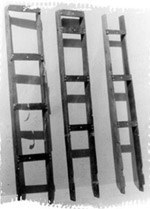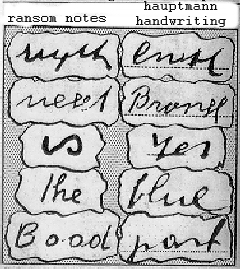The Hauptmann trial generated great controversy. Many people believed at the time--and some people continue to believe--that Hauptmann was innocent. Those maintaining Hauptmann's innocence emphasize that the prosecution's case was largely circumstantial. No one saw Bruno Hauptmann climb into Lindbergh's second-story window. No one saw him with the baby. Moreover, some of the evidence that people have come to expect at a criminal trial--crime scene fingerprints, a murder weapon--was never produced. Advocates of Hauptmann's innocence also point to the failure of the prosecutors to provide the defense with exculpatory evidence, initial FBI reports suggesting that the kidnaping required two persons, and police screw-ups (such as the failure of police to measure footprints found near the Lindbergh home). The suicide of Violet Sharpe, Lindbergh's maid, has been taken by some as evidence of her participation in an inside conspiracy. Finally, some people have been impressed by the fact that Hauptmann continued to assert his own innocence all the way to the electric chair. Nonetheless, the prosecution's case against Hauptmann was a strong one. Some of the key prosecution evidence is described below.
Evidence Relating to the Kidnapping

LADDER USED IN KIDNAPPING
1. The key evidence tying Hauptmann to the actual kidnapping was a section of attic floor board taken from Hauptmann's Bronx apartment that precisely matched the grain of wood used for "rail 16" of the ladder found left at the kidnap scene. Moreover, rail 16 had four rare square nail holes that matched the nails used in Hauptmann's attic. Several jurors said after the trial that wood evidence was the most significant in proving Hauptmann's guilt.
2. Hauptmann had a criminal record in Germany. One conviction involved a second-story job using a ladder.
3. Millard Whited, a logger living a mile from the Lindbergh house, said that he saw Hauptmann prowling around the Lindbergh estate on two occasions in the days before the kidnapping.
Evidence Relating to Ransom Demands

RANSOM NOTE
4. Hauptmann's handwriting had many points of similarity with the ransom notes. For example, both Hauptmann's handwriting and that found on the ransom notes had backward "N"s, unclosed "o"s, the same shaped "t"s, and the same curls to the "y"s.
5. Hauptmann misspelled many of the same words that were misspelled in the ransom notes. For example, Hauptmann and the author of the ransom notes both misspelled "where" as "were," "our" as "ouer," "later" as "latter," and "boat" as "boad."

6. Dr. John Condon, the man who delivered the ransom money to a man named "John" in a dark cemetery testified that "John" resembled Bruno Hauptmann. (Although, at a police line-up, he said he was not "John.")
7. Charles Lindbergh testified that the voice of "John" that he heard in the cemetery sounded like the voice of Hauptmann.
8. A taxi driver testified that the man who gave him a note to deliver to Dr. Condon was Hauptmann.
9. Hauptmann quit his job within days after the ransom money was paid.
10. Dr. Condon's phone number was found written on a closet wall in Hauptmann's kitchen.
11. A gas station attendant and a movie theater cashier identified Hauptmann as having passed marked $10 gold certificates.

GOLD CERTIFICATE THAT LED TO HAUPTMANN'S ARREST
12. $14,000 in ransom money was found in a tin can in Hauptmann's garage. The ransom money was concealed by framing lumber and shellac.

TIN CAN FOUND IN GARAGE
